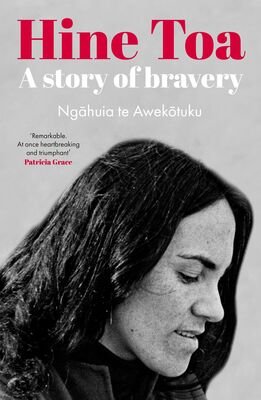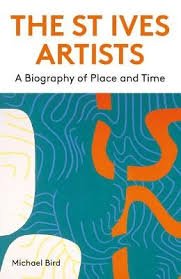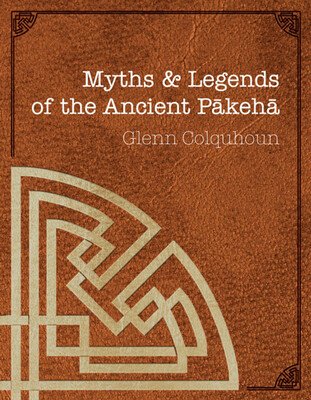NEW RELEASES (10.5.24)
These books have just arrived!
Click through to our website for your copies:
Hine Toa: A story of bravery by Ngāhuia te Awekōtuku $40
A memoir by a trailblazing voice in women's, queer and Māori liberation movements. In the 1950s, a young Ngāhuia is fostered by a family who believe in hard work and community. Although close to her kuia, she craves more: she wants higher education and refined living. But whanau dismiss her dreams. To them, she is just a show-off, always getting into trouble, talking back and running away. In this fiery memoir about identity and belonging, Ngahuia te Awekotuku describes what was possible for a restless working-class girl from the pa. After moving to Auckland for university, Ngahuia advocates resistance as a founding member of Nga Tamatoa and the Women's and Gay Liberation movements, becoming a critical voice in protests from Waitangi to the streets of Wellington.
”Remarkable. At once heartbreaking and triumphant.” —Patricia Grace
”Brilliant. This timely coming-of-age memoir by an iconic activist will rouse the rebel in us all. I loved it.” —Tina Makereti
Julia by Sandra Newman $37
London, chief city of Airstrip One, the third most populous province of Oceania. It's 1984 and Julia Worthing works as a mechanic fixing the novel-writing machines in the Fiction Department at the Ministry of Truth. Under the ideology of IngSoc and the rule of the Party and its leader Big Brother, Julia is a model citizen - cheerfully cynical, believing in nothing and caring not at all about politics. She routinely breaks the rules but also collaborates with the regime whenever necessary. Everyone likes Julia. A diligent member of the Junior Anti-Sex League (though she is secretly promiscuous) she knows how to survive in a world of constant surveillance, Thought Police, Newspeak, Doublethink, child spies and the black markets of the prole neighbourhoods. She's very good at staying alive. But Julia becomes intrigued by a colleague from the Records Department — a mid-level worker of the Outer Party called Winston Smith — when she sees him locking eyes with a superior from the Inner Party at the Two Minutes Hate. And when one day, finding herself walking toward Winston, she impulsively hands him a note — a potentially suicidal gesture — she comes to realise that she's losing her grip and can no longer safely navigate her world. Newman’s feminist narrative stands in parallel to Orwell’s Nineteen Eighty-Four and is full of comtemporary resonance and urgency.
”Sandra Newman's Julia, approved by Orwell's estate, is neither an anachronistic betrayal of the source material, nor some parched scholarly exercise. Rather, it is a vibrant, full-blooded book that adheres to the spirit of the original while tearing elements of it — namely the character of Winston Smith — to pieces. It is very funny, peppered with fresh observations that made me laugh out loud. Newman hits all the big beats from Orwell's book — the torture in Room 101, Julia and Winston's final meeting, but what is so wonderful about this is not just its depiction of Julia as even cleverer than you might imagine, but also its rich understanding of what Orwell meant about society's three strata locked in an endless battle for supremacy. Julia, living in this pressure cooker, is often cruel as well as astute. She is the one in the end who understands this.” —I Paper
”Julia's story is so well engineered it perfectly matches the contours of Nineteen Eighty-Four. The same goes for Newman's dialogue and descriptive language, both of which have an Orwellian melody. This is a good book, which offers an optimistic take on the pessimistic original.” —Irish Independent
Hagstone by Sinéad Gleeson $37
The sea is steady for now. The land readies itself. What can be done with the woman on the cliff? On a wild and rugged island cut off and isolated to some, artist Nell feels the island is her home. It is the source of inspiration for her art, rooted in landscape, folklore and ‘the feminine’. The mysterious Inions, a commune of women who have travelled there from all over the world, consider it a place of refuge and safety, of solace in nature. All the islanders live alongside the strange murmurings that seem to emanate from within the depths of the island, a sound that is almost supernatural — a Summoning as the Inions call it. One day, a letter arrives at Nell's door from the reclusive Inions who invite Nell into the commune for a commission to produce a magnificent art piece to celebrate their long history. In its creation, Nell will discover things about the community and about herself that will challenge everything she thought she knew.
The Hearing Test by Eliza Barry Callahan $38
An artist in her late twenties awakens one morning to a deep drone in her right ear. She is diagnosed with Sudden Deafness, but is offered no explanation for its cause. As the spectre of total deafness looms, she keeps a record of her year — a score of estrangement and enchantment, of luck and loneliness, of the chance occurrences to which she becomes attuned — while living alone in a New York City studio apartment with her dog. Through a series of fleeting and often humorous encounters — with neighbours, an ex-lover, doctors, strangers, family members, faraway friends, and with the lives and works of artists, filmmakers, musicians, and philosophers — making meaning becomes a form of consolation and curiosity, a form of survival. At once a rumination on silence and a novel on seeing, The Hearing Test is a work of vitalising intellect and playfulness which marks the arrival of a major new literary writer with a rare command of form, compression, and intent.
”A young woman's sudden hearing loss initiates and propels The Hearing Test. But affliction is also a catalyst for the many irresistible twists and digressions that make this novel of derive so compelling. Callahan never explains; with steely reserve she observes and chronicles, makes ingenious, delirious connections and transitions, and takes us on a journey through her cultural mindscape of artists, writers, cinema and music, offering it up with muted irony and a limpid grace. The Hearing Test is ecstatic prose.” —Moyra Davey
”Eerie and tender and utterly consuming, The Hearing Test has built an entirely new world from the materials of the one we know. It takes you to a restaurant called the void, Il Vuoto, and serves you its primal, beguiling sustenance: a nourishment of pauses, estrangement, and bewilderment. The voice here is wise and wry and wondering; in its fresh and faltering silences are frequencies I've never heard before. From the first paragraph, I knew I wanted to keep reading Eliza Barry Callahan forever.” —Leslie Jamison
”A composer suffering from sudden hearing loss finds herself even more sensitive to the lives of others, observing neighbors and the absurdities of the city, always punctuated by art and literary gossip. This debut work by Eliza Callahan is an extraordinary piece of literature, to be read alongside the novels of W.G. Sebald, Rachel Cusk, and Maria Gainza.” —Kate Zambreno
Feedback: Uncovering the hidden connections between life and the universe by Nicholas R. Golledge $60
We live in a world where things come and go, rise and fall, grow and decay, tracing out cycles of change that are ordered and predictable. But amongst those well-behaved rhythms hide other phenomena, pulsing and fizzing and refusing to play by the same rules. Earth and the life upon it have evolved over billions of years to be right where we are now only because of feedbacks that pushed those systems until they broke. And then those systems adapted, reorganized, and rebuilt. With each new cycle of growth it was feedbacks that created order from disorder and gave rise to a world perfectly optimized for everything it needed to be. Now the latest scientific research is revealing that the exact same patterns that describe plate tectonics, evolution, and mass extinctions also emerge in the heartbeat of our everyday lives, underpinning everything from the cohesion of our social networks and personal relationships to our emotional well-being and spiritual beliefs. In Feedback, we embark on a backstage journey revealing how these lesser-known processes keep us operating right where we need to be, poised at the edge of chaos. In a world simultaneously threatened with social and environmental disasters this journey uncovers the hidden connections that unite us not just to those around us but also across vast scales of time and space to the very fabric of the universe. An important book from a Pōneke climate scientist.
”Left me fizzing with the joy of being alive.” —Rebecca Priestley
I Must Be Dreaming by Roz Chast $50
New Yorker cartoonist Roz Chast's new graphic narrative, explores the surreal nighttime world inside her mind — and untangles (or retangles) one of our most enduring human mysteries: dreams. Ancient Greeks, modern seers, Freud, Jung, neurologists, poets, artists, shamans — humanity has never ceased trying to decipher one of the strangest unexplained phenomena we all experience: dreaming. In her new book, Roz Chast illustrates her own dream world, a place that is sometimes creepy but always hilarious, accompanied by an illustrated tour through ‘Dream-Theory Land’ guided by insights from poets, philosophers, and psychoanalysts. Illuminating, surprising, funny, and often profound. Recommended!
Pencil by Carol Beggy $23
A cylinder of baked graphite and clay in a wood case, the pencil creates as it is being destroyed. To love a pencil is to use it, to sharpen it, and to essentially destroy it. Pencils were used to sketch civilization's greatest works of art. Pencils were there marking the choices in the earliest democratic elections. Even when used haphazardly to mark out where a saw's blade should make a cut, a pencil is creating. Pencil offers a deep look at this common, almost ubiquitous, object. Pencils are a simple device that are deceptively difficult to manufacture. At a time when many use cellphones as banking branches and instructors reach students online throughout the world, pencil use has not waned, with tens of millions being made and used annually.
The Morningside by Téa Obreht $40
There's the world you can see. And then there's the one you can't. Welcome to The Morningside. Silvia feels unmoored in her new life because her mother has been so diligently secretive about their family's past. Silvia knows almost nothing about the place she was born and spent her early years; nor does she know why she and her mother had to leave. But in Ena there is an opening: a person willing to give a young girl glimpses into the folktales of her demolished homeland, a place of natural beauty and communal spirit that is lacking in Silvia's lonely and impoverished reality. Enchanted by Ena's stories, Silvia begins seeing the world with magical possibilities, and becomes obsessed with the mysterious older woman who lives in the penthouse of the Morningside. Bezi Duras is an enigma to everyone in the building; she has her own elevator entrance, and only leaves to go out at night and walk her three massive hounds, often not returning until the early morning. Silvia's mission to unravel the truth about this woman's life, and her own haunted past, may end up costing her everything.
”Obreht is a novelist of great skill and warmth, for whom the ancient forms of storytelling — folk tales, myths and legends — retain all their capacity to explain and mystify, soothe and terrify. Though The Morningside could be called dystopian, to this reader it feels hopeful in the way it imagines the near future. It is more about the ways we pull together than the ways we fall apart.” —Guardian
The St Ives Artists: A biography of time and place by Michael Bird $75
The flourishing of international modernism in Cornwall was a unique episode in the story of modern art in Britain. No other small seaside town has been host to such a roll-call of major artists. Weaving in-depth research into a narrative of 'startling anecdotal richness', Michael Bird explores the many — often unexpected — connections between St Ives artists and broader currents in 20th-century British history. He sets the careers of international artists such as Barbara Hepworth, Ben Nicholson, Patrick Heron and Peter Lanyon in the context of a local environment that held powerful meanings for their work.
Bird examines the influence of the two world wars, the birth of the Welfare State and the Cold War, the space race of the 1960s — all of which found echoes in artists' work — as well as the position of women artists in St Ives, the role of social class, and relations between artists and the community. The artists themselves emerge as vivid personalities. Do Alfred Wallis, Naum Gabo, Bernard Leach and Roger Hilton really have anything in common? The answers Michael Bird uncovers add up to a fascinating and highly readable account of the St Ives phenomenon. A new edition of this superb book.
Ora — Healing Ourselves: Indigenous knowledge, healing, and wellbeing edited by Leonie Pihama and Linda Tuhiwai Smith $65
This collection brings together indigenous thinkers and practitioners from Aotearoa and internationally to discuss the effects of trauma on indigenous peoples across social, economic, political and cultural environments. The authors explore understandings and practices of indigenous people, grounded in the knowledge of ancestors and based on research, that facilitate healing and wellbeing. The first part of the book focuses on research findings from He Oranga Ngākau: Māori Approaches to Trauma Informed Care, which supports health providers working with whanau experiencing trauma. It discusses tikanga Māori concepts, decolonising approaches and navigating mauri ora. The subsequent chapters explore indigenous models of healing, focusing on connections to land and the environment, whakapapa connections and indigenous approaches such as walking, hunting, and growing and accessing traditional foods for wellbeing. Important.
A Very Private Eye by Barbara Pym $30
Selected from the diaries, notebooks, and letters of this beloved novelist A Very Private Eye is a unique, continuous narrative autobiography, providing a privileged insight into a writer's mind. Philip Larkin wrote that Barbara Pym had "a unique eye and ear for the small poignancies of everyday life." Her autobiography demonstrates this, as it traces her life from exuberant times at Oxford in the Thirties, through the war when, scarred by an unhappy love affair, she joined the WRNS, to the published novelist of the Fifties. It deals with the long period when her novels were out of fashion and no one would publish them, her rediscovery in 1977, and the triumphant success of her last few years. It is now possible to describe a place, situation or person as "very Barbara Pym."
”One does not laugh out loud while reading Barbara Pym; that would be too much. One smiles. One smiles and puts down the book to enjoy the smile. Then one picks it up again and a few minutes later an unexpected observation on human foibles makes one smile again.” —Alexander McCall Smith
Bicycle by Jonathan Maskit $23
These days the bicycle often appears as an interloper in a world constructed for cars. An almost miraculous 19th-century contraption, the bicycle promises to transform our lives and the world we live in, yet its time seems always yet-to-come or long-gone-by. Jonathan Maskit takes us on an interdisciplinary ride to see what makes the bicycle a magical machine that could yet make the world a safer, greener, and more just place. There is so much that can be achieved if we apply our musculature to an external skeleton!
The Silver Bone by Andrey Kurkov (translated by Boris Dralyuk) $38
Kyiv, 1919. The Soviets control the city, but White armies menace them from the West. No man trusts his neighbour and any spark of resistance may ignite into open rebellion. When Samson Kolechko's father is murdered, his last act is to save his son from a falling Cossack sabre. Deprived of his right ear instead of his head, Samson is left an orphan, with only his father's collection of abacuses for company. Until, that is, his flat is requisitioned by two Red Army soldiers, whose secret plans Samson is somehow able to overhear with uncanny clarity. Eager to thwart them, he stumbles into a world of murder and intrigue that will either be the making of him — or finish what the Cossack started. Inflected with Kurkov's signature humour and magical realism, The Silver Bone takes inspiration from the real life archives of crime enforcement agencies in Kyiv, crafting a propulsive narrative that bursts to life with rich historical detail.
Long-listed for the 2024 International Booker Prize.
The Letter with the Golden Stamp by Onjali Q. Raúf $20
“I can't remember how old I was when I first started collecting stamps. But I've got a whole shoebox full of them now. Mam used to help me collect them ... Before she got so ill that she lost her job, her friends...everything. Now it's my job to take care of her and protect her - and my little brother and sister too. But to do that, I have to make Mam a Secret. A secret no-one can ever find out about. Not even my best friends at school, or Mo, our postman. Or the stranger living in the house across the street. The one no-one has seen, but who I know is spying on us. The one I think might be Them...”
Tibbles the Cat by Michal Šanda and David Dolenský $30
In 1894 Tibbles the cat moved to Stephens Island in the Marlborough Sounds to accompany her owner, the new lighthouse keeper. Tibbles ‘discovers’ a rare flightless species of wren, to the great excitement of ornithologists from around the world. Their demand for specimens and Tibbles’s natural habits soon caused the wren’s extinction, however. This event brought to the worlds attention the dangers of introducing exotic animals into fragile habitats.
Ngā Wāhine e Toru: Three Women by Glenn Colquhoun $45
In this collection of poems Glenn Colquhoun writes to his daughter, former partner, and mother, using the medium of Māori oral poetry. In doing so he explores oriori, karakia, haka, mōteatea, pātere, waiata aroha and waiata tangi. It is a companion volume to Myths and Legends of the Ancient Pākehā, his collection of oral poetry in English. Bilingual edition. “Māori oral poetry is a living tradition that is constantly added to. It contains remarkable stories. It uses metaphors drawn from our own land, sea and sky. It is sung to the tunes of the wind and of water and of birds. Working within its traditions I have come to see that at the heart of all poetry, written or spoken, is a kind of cry. And if a poem cries well, then its meaning is always simply in the nature of that cry first and foremost. Language, understanding, cognition, are always second to this. Of all of the arts practised by Māori and Pākehā our two poetries have remained the most stubbornly separated from each other over time. I hope these pieces go some way towards addressing that gap. More than anything else they are a gift to the people of Te Tii for all they have done for me. I have always hoped that I might finish them in time for some of those kuia who were there when I arrived on New Brighton Road bedraggled and naive, to listen to. They are the product of their work as much as my own.” —Glenn Colquhoun
Myths and Legends of the Ancient Pākehā by Glenn Colquhoun, illustrated by Nigel Brown $45
In this collection of poems Glenn Colquhoun explores a range of Pākehā oral poetic forms; sea shanties, hymns, ballads, nursery rhymes and clapping songs. It is a companion volume to Three Women, his collection of poetry in Te Reo Māori, and is richly illustrated by Nigel Brown. “It was by looking at Māori oral poetry more closely that I came to ask what it is that a Pākehā oral poem might sound like. And whether it is capable of holding the same power. Might a sea-shanty meet the energy of a haka? Can a hymn stand up to a mōteatea? To find out I went back to the ways that spoken English poetry first arrived in New Zealand: via sea-shanty and hymn, lullaby and nursery rhyme, working song, clapping song and skipping song. I also went back to what has often been the concern of oral poems, our histories.” —Glenn Colquhoun

















